Imagine you are a leader, educator or keynote speaker. How can you use your strengths to communicate in a compelling way?
This article summarises one approach that is used by good communicators. You will, of course, adapt this approach in your own way.
Start By Setting The Context
Great communicators start by giving the context and ensuring that people can see the big picture. Here are some examples.
The leader may say:
We as a team are aiming to achieve the following picture of success: …
So far we are doing the following things well: … We also need to improve in the following areas: …
Today we are going to explore the following theme: …
The way this fits into the big picture and will help us to achieve success is: …
The educator may say:
We are studying the field of: …
So far we have covered the following areas: …
Today we are going to focus on the following topic: …
The way this fits into the big picture of what we are studying is: …
Good communicators recognise that people need to see the context. They need a frame of reference. People are then more able to slot the information into the big picture.
Try tackling the exercise on this theme. Imagine that you are going to talk to a group or, if more appropriate, talk with a person in a one-to-one situation.
Describe the specific situation in which you are going to communicate with people or with one person.
Describe the themes – or theme – that you want to cover in the communication.
Describe how you can set the context so that people can see things within the big picture.
Give The First Concept
Good communicators then often introduce the first ‘concept’. This can be the first theme they want to cover.
Imagine that a leader wants to encourage their managers to act as good models for people in the business. They may introduce the concept in the following way.
Good leaders recognise that they are always ‘On Stage’. People learn from what the leaders do, not what we say.
Parents act as models for their children. We are obviously not parents to our staff, but people will watch us to see how we behave.
Perhaps this sounds too demanding, because we are human beings and will make mistakes.
People will, however, pick up on our mood. They will watch the way we communicate, speak and act.
Looking back on your own life, remember how you reacted to, for example, teachers and managers.
You probably watched them closely to read their emotions; then judged what it was safe to say or do.
The way we behave can have a profound effect on the business. So in a moment I will give some examples of how we can continue to be good models.
You will, of course, introduce the first concept in your own way. Bearing in mind the topics you want to cover, try tackling the exercise on this theme.
Describe the first concept you want to introduce.
Describe the specific things you can do to explain how this fits into the big picture and is relevant for people.
Move To The Concrete
Good communicators move from the concept to the concrete. How to make this happen?
One approach is simply to follow each idea you introduce by saying: For example: …
This immediately forces you to give a specific example that brings the idea to life.
Providing you have thought through the idea – and know your onions – you will find the examples come easily. So just try saying For example … and see what pictures come to mind.
Good communicators also give examples that resonate with people and show how they can translate the concept into concrete actions.
Imagine a leader is talking with their colleagues about being on stage. They may bring this to life by giving examples about how they can behave when, for example:
Arriving at work in the morning.
Greeting the receptionist.
Talking with people in the lift.
Walking into the main office.
Answering the phone.
Being on time for meetings.
Encouraging people, but also sometimes giving tough messages.
Try tackling the following exercise. This invites you to do the following things.
Describe the concept you want to bring to life.
Describe the specific concrete examples you can give to bring the concept to life.
Conclude The Session
Good communicators keep moving between the concept and the concrete. They may then conclude the session by doing the following things.
They repeat the key messages they want people to remember.
They show what they personally are going to do to implement the action plan.
They provide a call to action that will encourage other people to deliver concrete results.
Bearing in mind the key messages you want to communicate, try tackling the exercise on this theme. This invites you to bring together what we have covered.
Describe the specific things you can do to keep reminding people of the context – the big picture.
Describe the specific things you can do to keep moving between the concept and the concrete.
Describe the specific things you can do to conclude the session and, if appropriate, encourage people to implement concrete action plans.


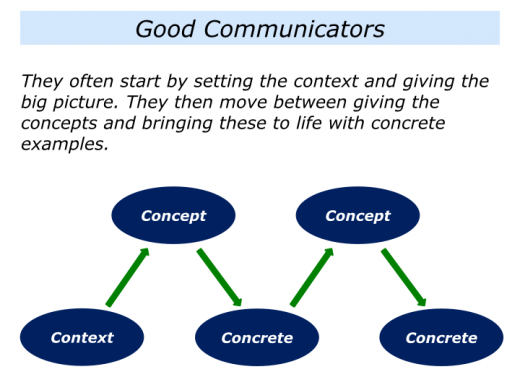
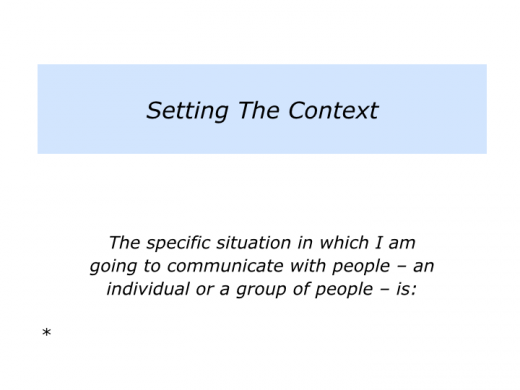
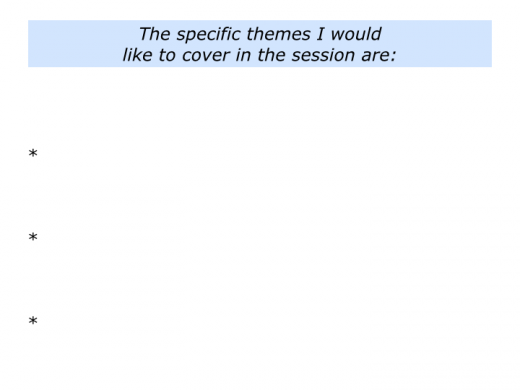
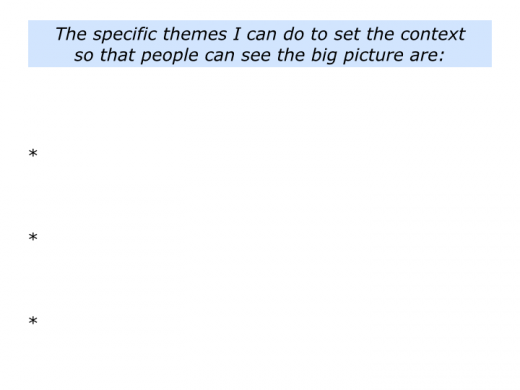
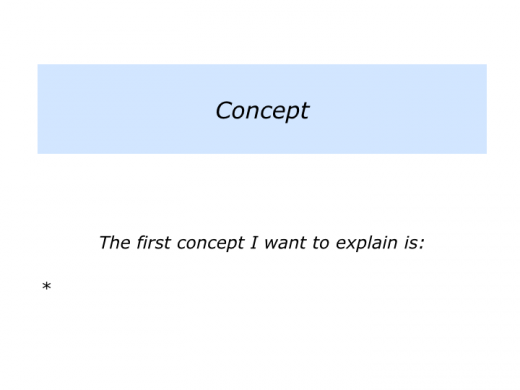
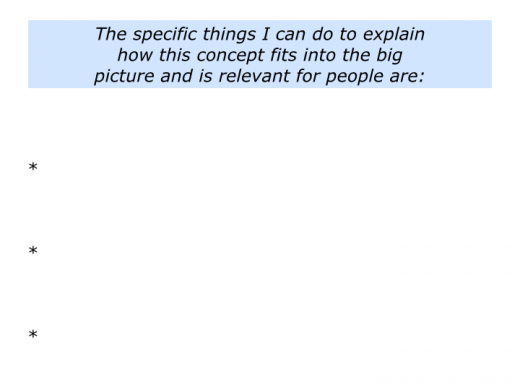
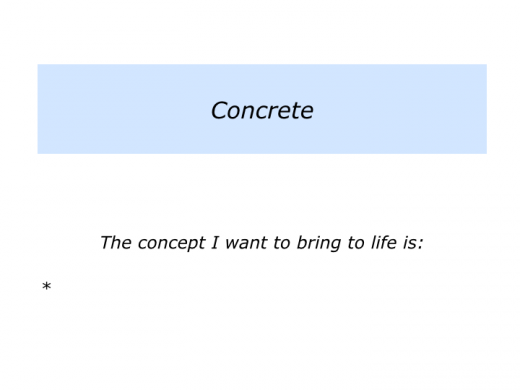
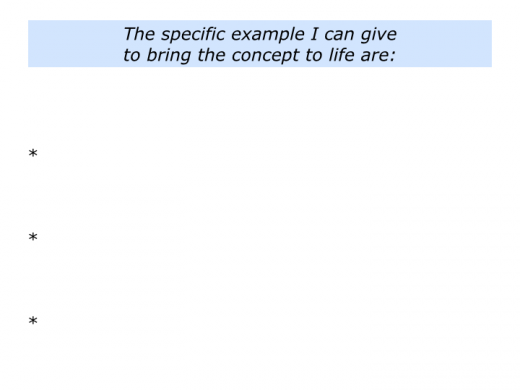
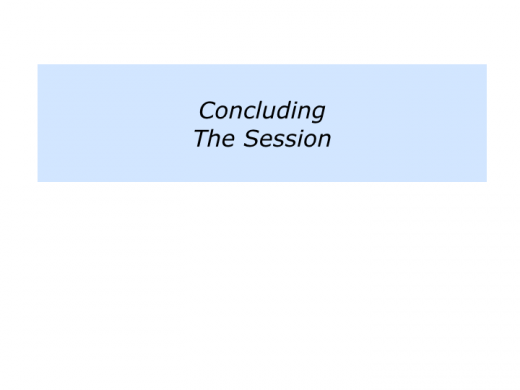
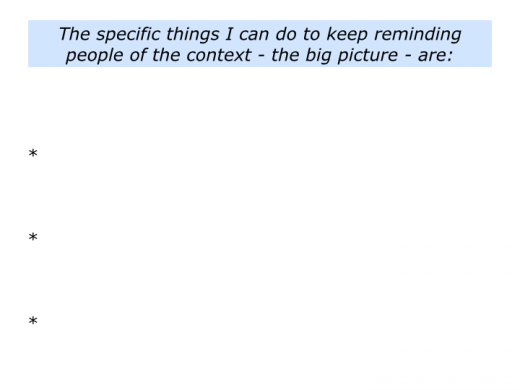
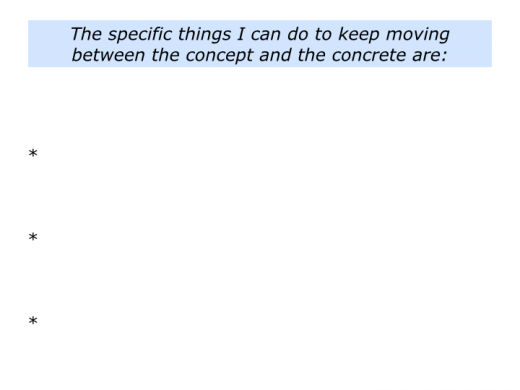
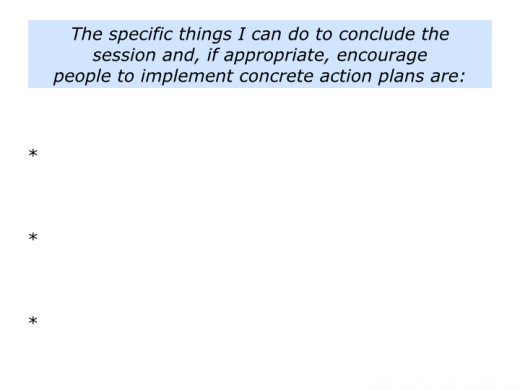




Leave a Reply